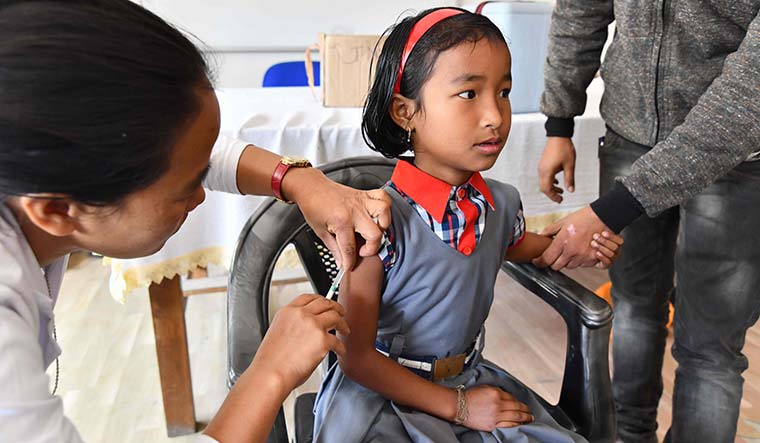In February 2017, India launched a massive vaccination campaign against rubella (aka German measles), a contagious viral disease which causes birth defects such as irreversible deafness and blindness in nearly 40,000 children, annually, in the country. With the programme targeting vaccination of 410 million children aged between 9 months and 15 years, it was the largest such effort anywhere in the world. However, a misinformation campaign was launched as well, spreading fear that the vaccine could affect the learning capacity of children. There were also rumours that the vaccine was targeted against a minority community. But the country's health machinery efficiently stopped the smear campaign with the help of the media and positive messaging from influential personalities.
Now, as India continues to strengthen its surveillance, the global fight against rubella has crossed a historic milestone. In October, the World Health Organization declared that, for the first time, over 50 per cent of the world's children are safe from rubella.
Rubella in Latin means “little red”—the disease is best characterised by its distinctive red rash. It is spread mainly via droplets of fluid from an infected person's mouth, nose or eyes. The main symptoms of rubella include mild fever, headache, red eyes, aching joints and rashes that begin on the face and then quickly spread to other parts of body. Some patients with rubella experience arthritis in the fingers, wrists and knees. If a pregnant woman gets affected by the virus, it can cause serious birth defects or even death to her unborn child. Up to 80 per cent of infants born to mothers who had rubella during the first 12 weeks of pregnancy develop growth retardation, cataract, deafness, congenital heart defects or intellectual disabilities.
Rubella was initially considered a variant of measles since the two illnesses have certain similarities. However, the virus causing rubella is different from the one causing measles. It was first described as a separate disease in 1814, in German medical literature, and hence got its common name “German measles”.
Rubella virus was first isolated in 1962. Two teams—one led by American physician Paul Parkman and the other by Nobel laureate Thomas Huckle Weller—were simultaneously trying for that. Both the teams succeeded and both published their results in the same volume of the Proceedings of the Society of Experimental Biology and Medicine. Along with Harry Martin Meyer, a paediatric virologist, Parkman later discovered the first widely accepted test for rubella antibodies and the vaccine against rubella. The first rubella vaccines were licensed in 1969. The vaccine is usually given as a combined measles-mumps-rubella inoculation. Children should receive the MMR vaccine between 12 and 15 months of age, and again between four and six years of age.
No treatment will shorten the duration of the viral infection. Those who plan on pregnancy should get the MMR vaccination at least 28 days prior to conception. If already pregnant, vaccination is not possible as the vaccine contains a live version of the virus, and it will affect the child.


